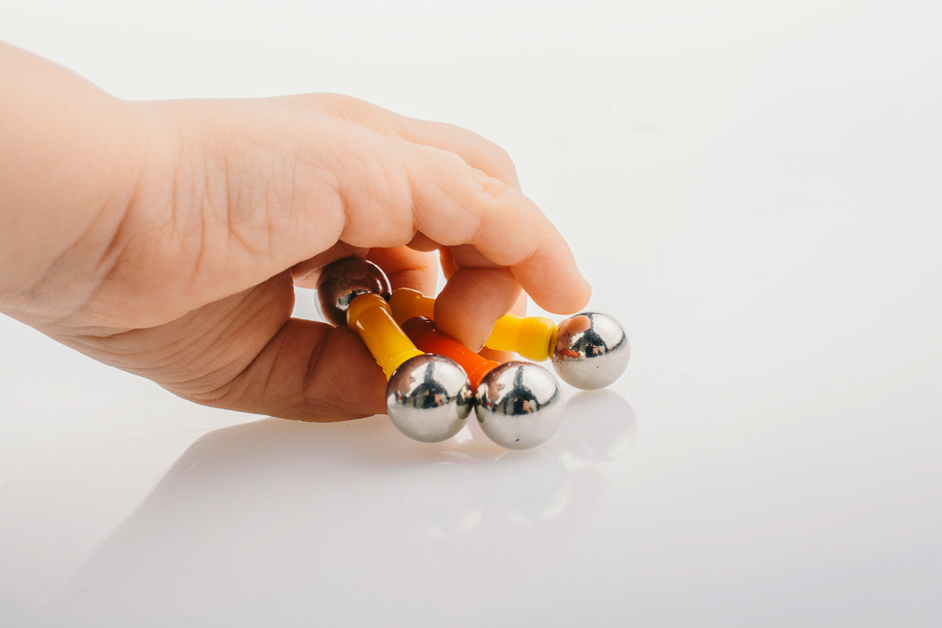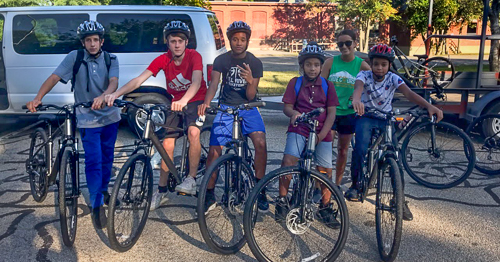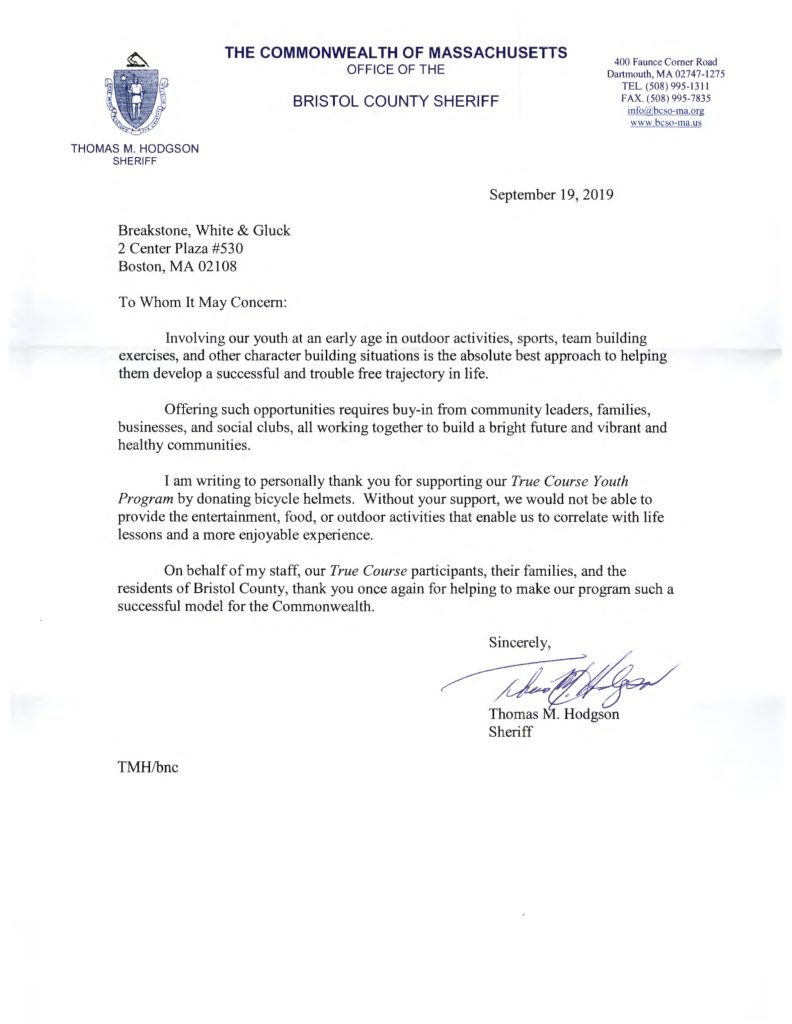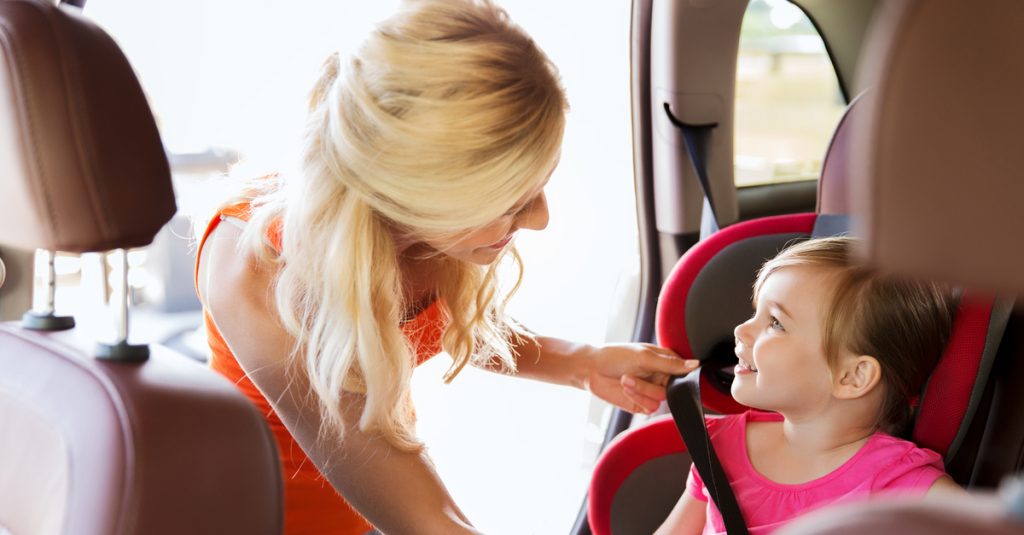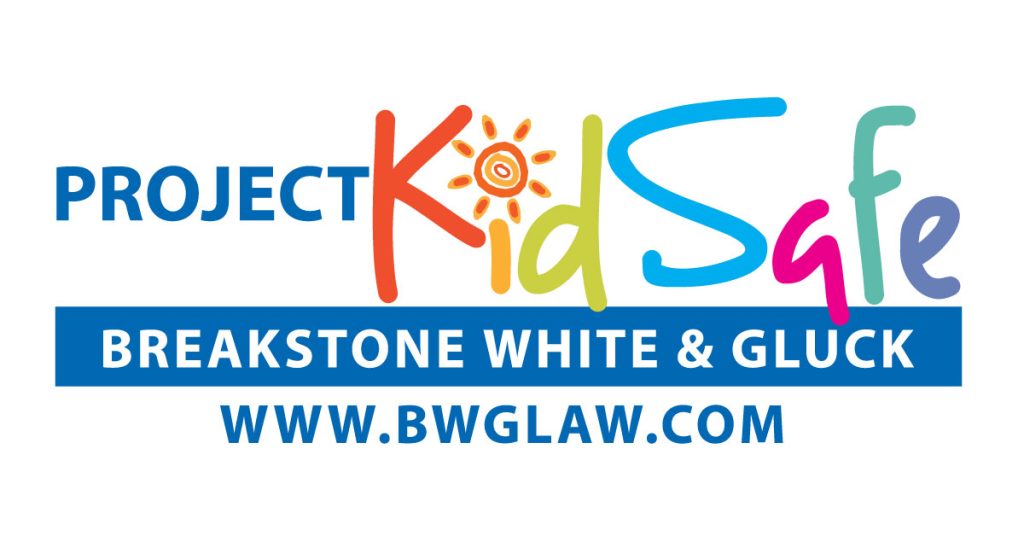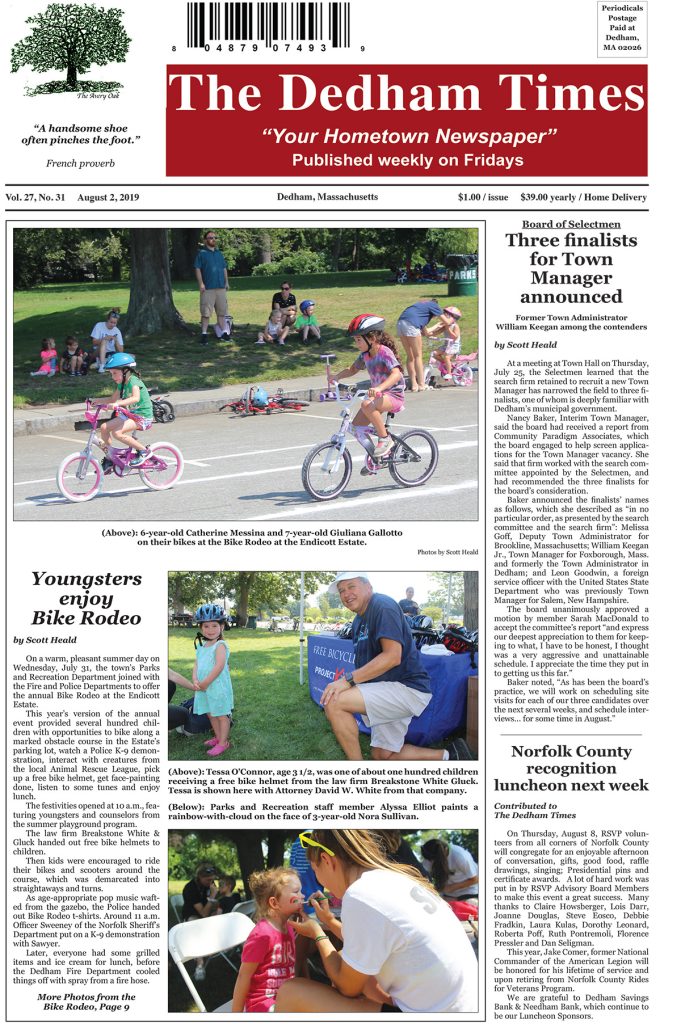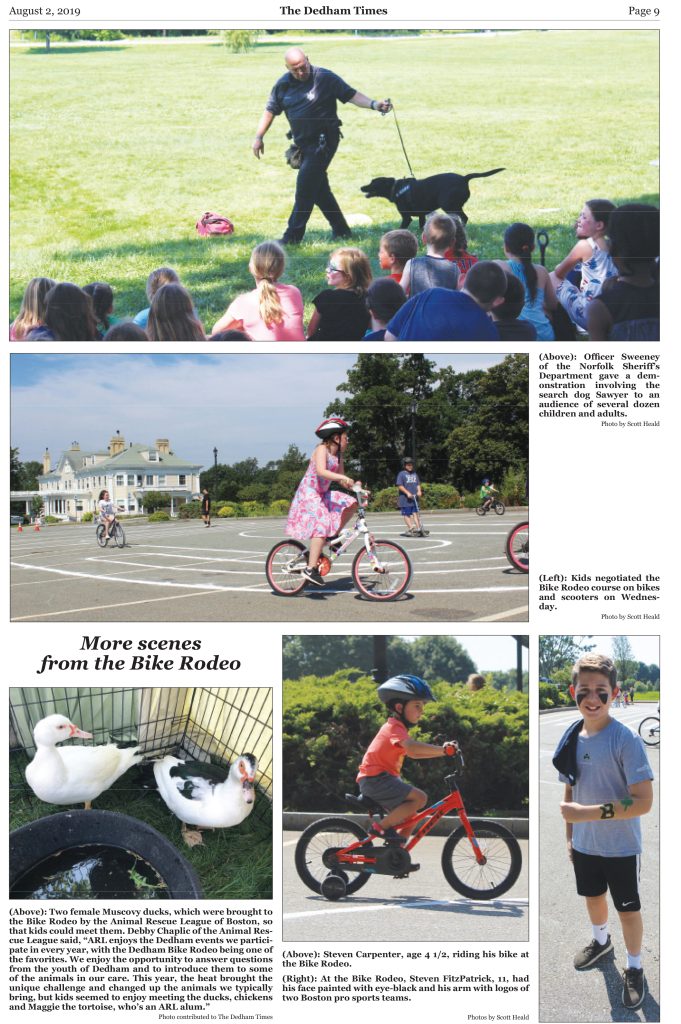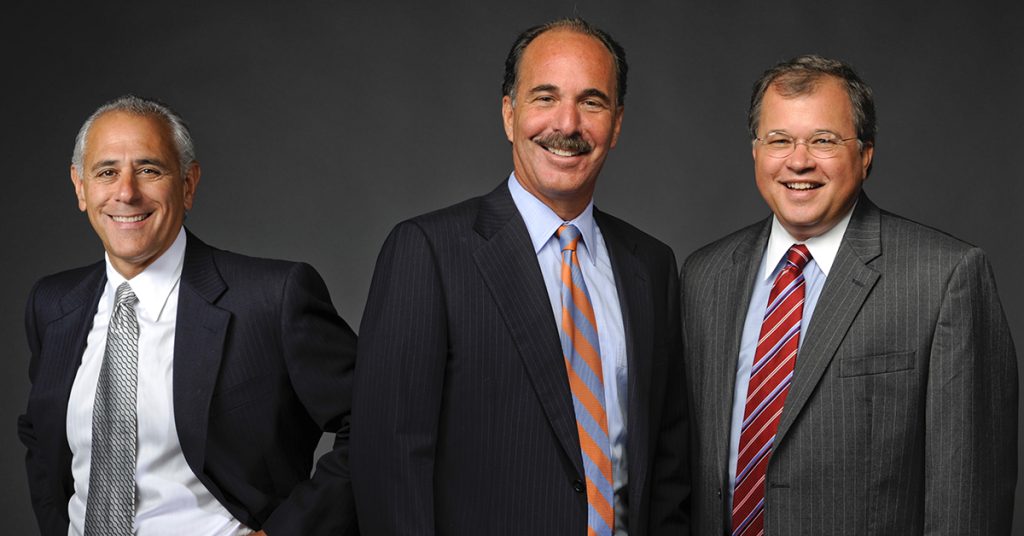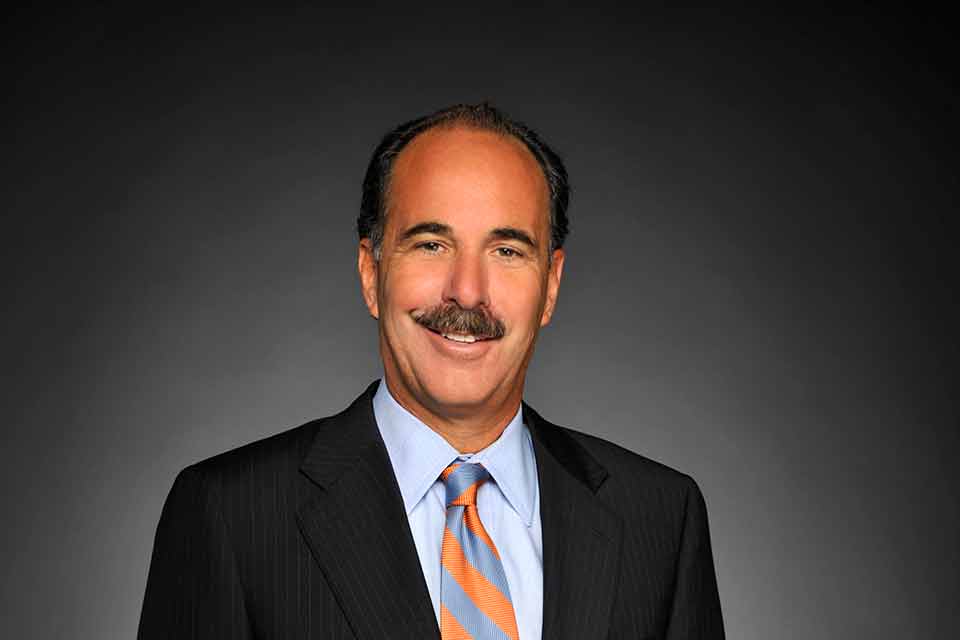Posts Tagged ‘“Boston personal injury lawyers”’
Buying Your Child a New Bike, Scooter or Snowboard This Holiday? Don’t Forget the Safety Helmet

Give the gift of safety. Always give a helmets to go with new bicycles, scooters and other riding toys.
It is a lot of fun to select a new bicycle or scooter for a child during the holiday season. But when you buy, remember to pick up a new helmet, too. This is a critical tool in protecting against head injuries and under Massachusetts law, children 16 and younger are required to wear helmets on bicycles, scooters, skateboards and inline skates.
Massachusetts Bicycle Helmet Law: Children 16 and younger are required to wear bicycle helmets when they ride bikes in Massachusetts, under M.G.L. c. 85, § 11B.
Massachusetts Scooter Helmet Law. M.G.L. c. 85, § 11B1/2 states children 16 and younger must also wear safety helmets on scooters, skateboards and inline skates, as well as other manually-propelled wheeled vehicles.
Helmet Buying Tips: Spotlight on Bike Helmets
Buy a bicycle helmet which meets the safety standards set by the U.S. Consumer Product Safety Commission (16 C.F.R. part 1203). This standard is specifically designed to protect a child’s head with shock-absorbent material in bicycle accidents or falls. It requires chin traps be strong enough to keep the helmet in position on the head.
Buy a helmet separately from your bike. You may find it helpful to buy a helmet separately. To get started, measure around your child’s head with a cloth tape measure. Measure just above your child’s eyebrows. Start looking now online or visit your local bicycle shop.
Stick to traditional bike helmets. The CPSC discourages parents from buying helmets with decorative and costume pieces, such as horns or parts which protrude from the helmet. These will interfere with the helmet’s ability to protect a child’s head should they ever hit the ground.
How long has your child been wearing that helmet? If your child has been wearing a helmet for three years, this is a good time to buy a new one. But depending on your child’s growth and wear and tear, you may want to replace it sooner. Carefully inspect the helmet on the inside and outside.
Buy an adjustable helmet. Because children grow fast, we suggest an adjustable helmet which can be tightened or loosened in the back.
Helmets Designed for Other Activities
Safety helmets are designed for certain purposes. Each sport and activity involves a different impact.
But bicycle helmets can often be used for recreational in-line skating, roller skating or manual kick scooters, according to the Consumer Product Safety Commission’s (CPSC) helmet guidelines. Check these guidelines whenever you buy a helmet.
Talk to your child’s sports coach about helmet guidelines for football, hockey, lacrosse and baseball.
Get your helmets ready for the winter. Helmets are recommended for skiing, snowmobiling, snowboarding and snow tubing. Many skiers say helmets interfere with their peripheral vision and response time. If this is your thought, consider reading this New York Times blog on just how much protection they can provide.
Before we close, another point is there are times when children should definitely NOT WEAR HELMETS, including at the playground or when playing at home. Helmets and straps can get caught and strangle a child on staircases and step ladders.
CPSC Guide – “What Helmet for Which Activity”
Helmets are essential to protecting your child. Here is the CPSC’s Guide, “Which Helmet for Which Activity.” This guide provides you with recommended safety standard guidelines for different activities, so it’s definitely worth bookmarking. Another helpful site is the CSPC recalls website, which you can search for product recalls before you make a purchase.
About Breakstone, White & Gluck
Boston Personal Injury Lawyers – Toy Safety Lawyers
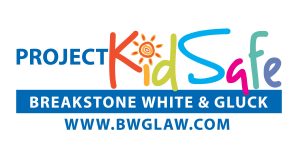 At Breakstone, White & Gluck, our lawyers are consistently recognized for their awards for clients in personal injury, medical malpractice and product liability cases. Through our Project KidSafe campaign, we work to promote bicycle safety and the well-being of children in Massachusetts. To date, we have donated over 25,000 bicycle helmets to children across the state.
At Breakstone, White & Gluck, our lawyers are consistently recognized for their awards for clients in personal injury, medical malpractice and product liability cases. Through our Project KidSafe campaign, we work to promote bicycle safety and the well-being of children in Massachusetts. To date, we have donated over 25,000 bicycle helmets to children across the state.
If you are shopping for a child, we invite you to read more of our holiday toy safety series.
Holiday Toy Safety: Check for Age Recommendations and Choking Hazard Labels
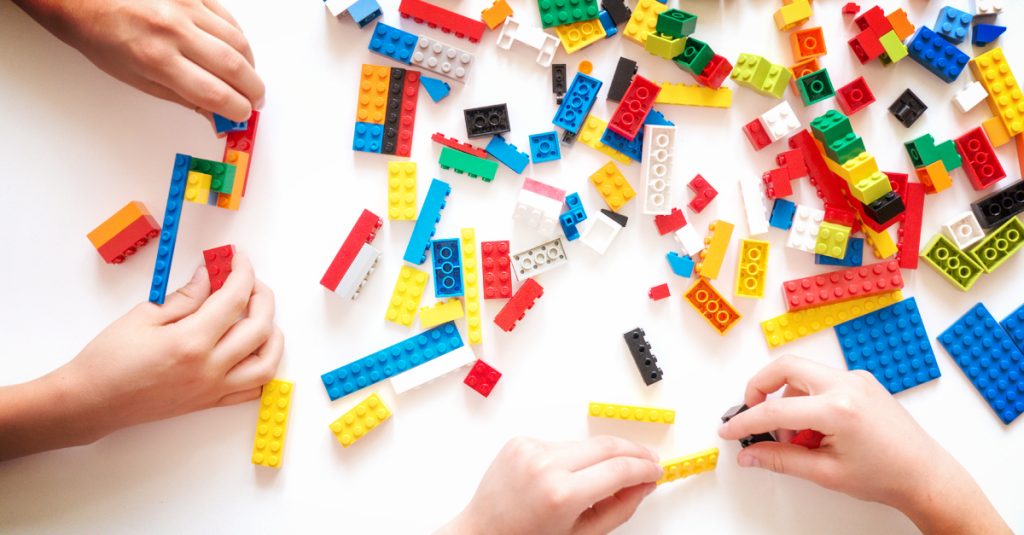 Age recommendation labels are the first tool you have in selecting safe holiday toys. Anyone purchasing toys for young children wants to familiarize themselves with the choking hazard-small parts label.
Age recommendation labels are the first tool you have in selecting safe holiday toys. Anyone purchasing toys for young children wants to familiarize themselves with the choking hazard-small parts label.
Warning: Choking Hazard – Small Parts. Not for Children Under 3 Years
Each year, children suffer choking injuries and deaths after consuming food or putting small objects in their mouths. In the late 1970s, the Consumer Product Safety Commission (CPSC) led a three-month study of an estimated 3,800 injuries involving children under age 10. It was determined that children under age 3 suffered more than half of all these injuries. More than 50 children under 3 died in accidents involving small parts.
With those numbers, the CPSC announced the small parts regulation, which became effective on January 1, 1980. Since then, toy manufacturers have been required to test toys and parts using the small parts cylinder test.
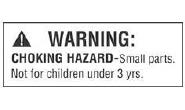
This cylinder has a diameter of 1.25 inches. The bottom of the cylinder is slanted, opening 1 to 2.25 inches. Toys which fall through the cylinder must carry the choking hazard – small parts warning and state not for children under 3 years old. Toys may also require labels if they fit through the tube, but break it during subsequent “use and abuse” testing (Source: U.S. PIRG, Trouble in Toyland 2018).
Toys which are too large can be sold without the choking hazard label, though they may require another type of labeling.
Small Parts Warning for Children Between Ages 3 and 6 Years
Any small part intended for children between age 3 and 6 must carry the same labeling: “Warning: Choking Hazard — This toy is a small part. Not for children under 3 years.”
Small Parts Warning – Small Balls
There is a separate federal standard for small balls, according to U.S. PIRG. Balls with a diameter of 1.75 inches are banned for children younger than 3 years of age.
Small balls must carry this age-recommendation label: “Warning: Choking Hazard — This toy is a small ball. Not for children under 3 years.” A similar label is required for toys which contain small balls: “Warning: Choking Hazard–Toy contains a small ball. Not for children under 3 years.”
Toymakers are required to test and use age recommendation labels. All toys intended for children age 12 and younger must undergo third-party testing and meet the most recent version of the federal safety standard, ATSM F963.
But there are times when parents and anyone buying a toy should be skeptical. Toymakers have made errors in labeling and there can be miscommunication between manufacturers and retailers when toys are displayed without packaging. Online product descriptions may not be accurate.
Remember These Toys Have Small Parts!
- Marbles
- Magnets
- Game pieces (such as the Monopoly characters)
- Legos and building bricks
- Small puzzle pieces (and cardboard pieces are a danger because small children can chew them and choke)
- Button batteries
- The clothing and parts on stuffed animals and dolls
- Pens and pencils with caps which can become loose
Additional Toy Safety Standards for Children Age 3 and Younger
While we are talking about small parts, we also want to remind parents of other federal toy safety guidelines for children under 3.
- Toys and children’s products must not have sharp points or edges which can potentially injure children.
- Paints and surface coating cannot contain more than .06 percent lead or other hazardous materials.
- Children’s pajamas, clothing and products which fail to meet flammability limits.
The best way to stay informed is to check the CPSC website for toy safety recalls and product warnings.
Final Points on Toy Safety for Young Children
Carefully inspect all toy sets and stuffed animals before and after purchase. Open boxes, handle the pieces yourself before giving. If you buy online, check if the box matches the online product description. Because of the demand for toys near the holidays, it’s not unusual for shoppers to receive a toy similar to what they ordered.Decide whether the toy will be safe near your child and their siblings. You should always consider younger siblings when buying gifts. If they are not at least 3 or older, wait another year. Also pause if the younger sibling just isn’t ready.
If your children are the right age and ready, purchase a secure container to keep the small parts in. Keep this container separate from other toys in your home and be mindful of not letting small pieces scatter.
Finally, supervise children whenever they play with small parts. Even older children can find themselves in dangerous situations at times when handling small pieces. This is especially true with new toys. So as they play, sit with them at the table or just stay in the room so you can help.
About Breakstone, White & Gluck – Boston Toy Safety Lawyers
 Our Boston personal injury lawyers represent clients in all personal injury matters, including motor vehicle accidents, medical malpractice, premises liability, wrongful death and cases involving injuries caused by defective products and unsafe toys. We share our holiday toy safety series as part of our Project KidSafe campaign.
Our Boston personal injury lawyers represent clients in all personal injury matters, including motor vehicle accidents, medical malpractice, premises liability, wrongful death and cases involving injuries caused by defective products and unsafe toys. We share our holiday toy safety series as part of our Project KidSafe campaign.
To learn more, visit our toy safety page. You can also visit our website to learn more about our attorneys and their experience.
Keep Magnet Toys Off Your Holiday Shopping List
We urge parents to keep magnet toys off your holiday shopping list for young children. High-powered “rare-earth” desk magnet toys are highly dangerous and there are many painful stories of children ingesting them, then fighting for their lives in surgery. But there are also other types of magnet toys, including magnet tile building sets and magnet construction toys. While these are very popular, this doesn’t mean they are safe for your family. Take time to do your research, read age recommendations and really consider your children’s needs.
Magnet Desk Toys or Cluster Magnet Toys
Read by product type:
Magnet Desk Toys or Cluster Magnet Toys
Tile Magnet Toys
Magnetic Construction Sets
Final Word on Safety
Magnet Desk Toys or Cluster Magnet Toys
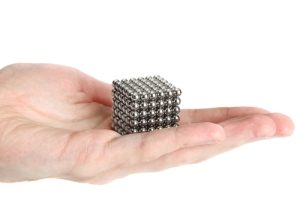
Cross desktop magnet sets off your holiday shopping list. These have caused hundreds of children injuries.
The Consumer Product Safety Commission (CPSC) has worked to take desktop magnet toys off the market to prevent injuries to children. The problem is the average set has 125 or 216 strong magnet balls, though some have more than 1,000 pieces. The magnets are tiny and are extremely high-powered.
These magnet sets come apart and can be reassembled into unique shapes. In a child’s hands, the magnet clusters may become a necklace, triangle or whatever formation they imagine. When magnets are put in a child’s mouth, they can attract to each other, causing serious injuries in the digestive system as well as blood poisoning. Children usually require surgery for the intense pain.
New Magnet Safety Standard. Prior to 2014, “rare-earth” magnet sets were required to carry age recommendation labeling of 14 and older. In 2014, the CPSC established a federal toy safety standard which required magnets to be large enough to exceed the CPSC’s “small part” standard for toys or that magnetic parts have a force of attraction of 50 kG² mm² or less, according to the CPSC’s Final Rule: Safety Standards for Magnet Sets. The CPSC safety standard effectively made it illegal to sell “rare-earth” magnet sets in the U.S. and there was a positive response, an 80 percent reduction in magnet-ingested injuries, according to The Journal of Pediatrics.
You may guess young children are at the highest risk. But children age 4 through 12 suffered the most injuries in the CPSC’s analysis of ER visits over 5 years, from 2009 to 2013. According to the Federal Register dated October 3, 2014, the agency concluded an estimated 2,900 children had suffered magnet ingestion injuries. Children age 4 through 12 suffered 1,900 injuries – or 65 percent.
Tile Magnet Toys
For all this work, in 2016, the 10th Circuit of Appeals ruled the CPSC’s pre-requisite factual findings were “incomplete and inadequately explained.” The Court vacated the safety standard and remanded it back to the CPSC for further proceedings.
The lawsuit had been filed by Zen Magnets, one of the “rare-earth” magnet makers. The company is now selling its products again, under the Buckyballs and Mandala names, according to Tech Crunch. Again, we stress, please don’t buy these toys, especially if you have children or a pet. The parts are small and scatter easily. If you don’t find our blog compelling, we encourage you to read this article in STAT, called “Toy magnets are harming kids again. They need to be banned – for good,” August 6, 2019.
Tile Magnet Toys
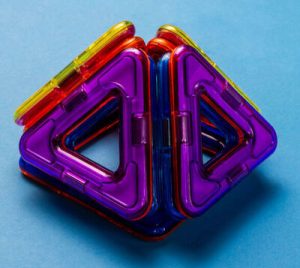
Magnet tile toys
These are magnets encased in plastic triangle and square shapes. These are popular, marketed as toys that help stimulate learning and imagination. Some of these are designed for children under age 3, some for children ages 3 and up; others are for age 6 and up. If you do purchase one of these sets, carefully check the age recommendation and secure it in a container out of reach of children.
There has been at least one case of the encasements opening and a child swallowing magnets. Last December, a Wisconsin mother shared her frightening story on social media and the Today Show reported on it. The woman’s 4-year-old son had swallowed 13 magnets from one of the tile magnet kits. After he began vomiting, she rushed him to a local hospital where surgeons had to remove part of his colon, intestine and appendix. The product manufacturer was not identified in the story.
The CPSC regularly issues recalls about toys containing small magnet parts. One of the largest recalls involving tile magnet building toys came in 2006, when Mega Brands America, Inc. recalled 4 million Magnetix Magnetic Building Sets. The recall was first announced on March 31, 2006 and re-issued and expanded in April 2007. The CPSC reported one child had died and one child had suffered aspiration. 27 others had suffered intestinal injuries, according to the CPSC news release.
The tragedy could have claimed even more lives; there had been 1,500 reports of magnets coming apart. Although the Magnetix Magnetic Building Sets were labeled age 6 and older, at least 10 injuries involved older children, up to age 11.
Magnetic Construction Sets
According to CBS News, in October of 2006, Mega Brands America settled a lawsuit with 15 victims for $13.5 million.
In 2009, consumers learned there was further wrongdoing in this case. On April 14, the CPSC announced that Mega Brands America, Inc. had agreed to pay a $1.1 million civil penalty to settle allegations that the company (and Rose Art Industries, which it had acquired) had failed to provide timely information about product dangers to children.
Magnetic Construction Sets
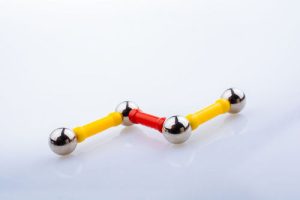
Magnet construction sets typically have magnets snap together with other stick pieces.
These sets include plastic rods and balls which can be snapped together with the magnet attraction.
Final Word on Safety
One problem is Consumer Reports found a full range of age recommendations across several popular products – and manufacturers unwilling to answer questions. Since age recommendations are the most fundamental tool consumers have, we recommend steering clear of these.
Final Word on Safety
The CPCS is responsible for overseeing product recalls and a quick search of its database can glean valuable information for parents. Visit www.cpsc.gov and search by product name or type of products. You can also visit the CPSC’s magnet information center.
With magnet toys, product regulations and age recommendations continue to change. They are very challenging to bring into any home safely, but especially homes with children of various ages and development skills and pets. In the end, you must make your own decision, but we urge you to be overly cautious and purchase other toys. There are so many other toys out there which can provide your child with a safe and enjoyable experience.
Breakstone, White & Gluck – Boston Toy Safety Lawyers
Breakstone, White & Gluck is a Boston law firm specializing in personal injury, medical malpractice and product liability. We wish Massachusetts families a safe and healthy holiday season and share our toy safety tips as part of our Project KidSafe campaign.
If you have been injured, contact Breakstone, White & Gluck to learn your legal rights at 800-379- or 617-723-7676. You can also use our contact form.
Breakstone, White & Gluck Donates Bike Helmets to Bristol County Sheriff’s True Course Youth Program
Breakstone, White & Gluck was pleased to donate our Project KidSafe bike helmets to Bristol County Sheriff Thomas M. Hodgson’s True Course Youth Program earlier this fall. The program offers youths ages 11 to 14 with a full line-up of outdoor activities aimed at teaching valuable lifelong skills.
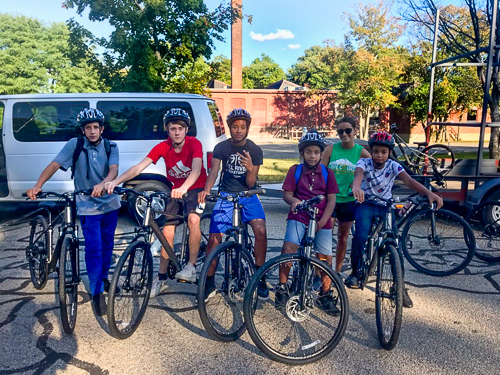
Massachusetts Parents: Reminders About Child Passenger Safety Seats
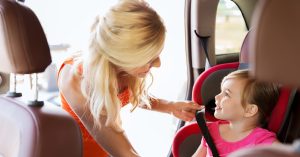
When properly used, child passenger safety seats can reduce the risk of fatal accidents by 71 percent for infants and by 54 for toddlers, according to the NHTSA.
Buying a car seat takes careful research. But most parents agree: the real hardship comes after you try to buckle your child up safely. While car seats are essential, they are anything but easy to use. And if you use them incorrectly, your child is left without proper protection.
All 50 states have laws requiring car seats for children. In Massachusetts, parents must secure their children in a federally-approved seat until they reach age 8 or over 57 inches tall. This is critical because car accidents are a leading cause of death for children ages 1 to 13, according to the National Highway Traffic Safety Administration (NHTSA). For every 32 seconds in 2017, a child under 13 was involved in a passenger vehicle crash.
We are writing about car seats because the NHTSA and other organizations recently observed Child Passenger Safety Week nationwide from Sept. 15 to Sept. 21. If you missed it, we are sharing a few resources and tips. If you are a parent, don’t lose hope. There are a lot of resources out there. The best place to start is with your local police department. Many police departments offer free car seat inspections year-round by appointment.
Selecting a Safe Car Seat
The NHTSA offers a free online resource to help parents select the right car seat. Parents should follow the manufacturer’s recommendations on age, weight and height recommendations for selecting car seats. NHTSA Find & Compare Car Seats
Types of Car Seats
Rear-facing seats. The NHTSA encourages children to use rear-facing seats up until age 3 or they reach the top of the manufacturer’s height and weight requirements. Always check your product manual for this information.
For the first 8 or 9 months, children should ride in rear-facing infant seats. The NHTSA then advises a move to a convertible or all-in-one seat, and that parents keep children rear-facing as long as they can.
As we said, it’s important to read your product manual and the manufacturer’s instructions. In past years, the recommendation was to keep your child in a rear-facing car seat until age 2. But new research has led to a new recommendation. In 2018, the American Academy of Pediatrics announced children can remain in rear-facing seats until they reach 40 pounds or more. While every child is different, this often comes after a child’s second birthday.
Forward-facing seats. Next, children will move into a harness and tether seat. This type of seat limits their forward movement if the car crashes. There are three types of forward-facing seats: convertible, combination and all-in-one.
Booster seats. These give children a boost so they can sit taller and safely use seat belts.
Without booster seats, seat belts can seriously injure children, causing abdominal bruising and injuries. Compared to seat belt use alone, booster seats are shown to reduce the risk for injury by 45 percent in children ages 4 to 8, according to the Centers for Disease Control and Prevention (CDC).
As with the other car seats, there are several types of booster seats: booster seats with high backs, backless booster seats, combination seats and all-in-on-seats.
In 2008, Gov. Deval Patrick signed the Massachusetts Child Passenger Safety Law, adding the booster seat requirement until children reach age 8 or 57 inches tall. At that point, children can move to regular seat belts in the back seat.
Making this transition earlier can leave your child without proper protection and vulnerable to injury. Unfortunately, parents are making this mistake. About 26 percent of children were moved to seat belts too early, according to the NHTSA.
Car Seat Registration and Expiration
Make sure to register your car seat with the manufacturer so the company can contact you if there is a recall. Car seats are frequently recalled and these can be widespread recalls, including mislabeling or defective parts. In 2014, Graco recalled 3.7 million car seats due to defective buckles, disrupting families across the country.
Remember, car seats have expiration dates. Look for the sticker at the bottom. The expiration date should be about six years from the manufacture date.
Never use a car seat beyond the expiration date. While the seat may appear to be in good condition, the plastic and other parts wear from daily use and exposure to sun, making the product less effective in protecting your child.
About Breakstone, White & Gluck – Boston Personal Injury Attorneys
Breakstone, White & Gluck has over 100 years combined experience representing those who have been injured and killed by the negligence and wrongdoing of others, including by car accidents. In 2013, we launched our Project KidSafe campaign to offer education and safety resources for children and families in Massachusetts. Learn more about Our Attorneys and our Project KidSafe campaign.
If you have been injured by someone else’s negligence, learn your legal rights from one of our attorneys. For a free legal consultation, call 800-379-1244 or 617-723-7676. You can also use our contact form.
NBC Boston Interviews Attorney David W. White About Hidden Dangers of Electric Scooters
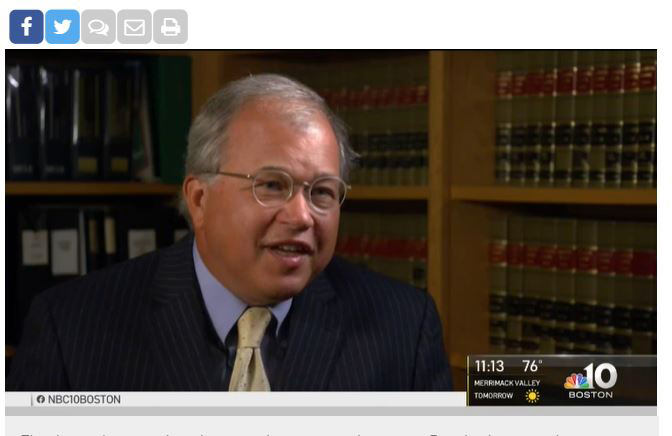
Attorney David W. White was interviewed by NBC Boston and said consumers are surrendering key rights when they enter into e-scooter agreements.
Electric scooters may look like an easy and convenient way to travel. But as they move into Massachusetts, there are definitely words of caution for riders.
Attorney David W. White was interviewed as part of NBC Boston’s coverage on e-scooters. He told NBC Boston’s Ally Donnelly that riders are often unaware of how vulnerable they are. If they are injured, they may look to their health insurance plan for coverage. But if they hit a pedestrian or cause property damage, they are on their own.
“You’re putting everything in the hands of the company and preserving essentially no rights for yourself whatsoever,” Attorney White said.
When riders accept a scooter company’s user agreement, they agree to resolve any issues through confidential arbitration with the e-scooter company and the maximum award is $100 – no matter what the situation. In most cases, when someone is seriously injured, they may require medical expenses as well as other damages, such as lost wages and pain and suffering.
But he said, “The most they will ever give you if they give you anything is $100.”
NBC Boston interviewed scooter riders in Brookline who admitted they hadn’t read the user agreement. While it appeared tiny on a cell phone, NBC Boston found one agreement actually printed out to 50 pages.
Attorney White said, “Our legislature is a decade behind this issue. Our insurance industry is a decade behind this issue. Everyone should care about this.”
The Boston City Council approved scooter regulations last March. Meanwhile, the Town of Brookline launched its e-scooter pilot program last April, bringing 200 scooters to the road. The program continues through mid-November.
Dedham Times Features Breakstone, White & Gluck’s Bike Helmet Donation for Kids
Breakstone, White & Gluck of Boston was recently mentioned in a Dedham Times article about the Dedham Bike Rodeo in August. Breakstone, White & Gluck and our Project KidSafe campaign participated for the seventh year and donated more than 100 helmets to the kids. Breakstone, White & Gluck is committed to helping children ride safely on bikes and protect against head injuries. Founded in 1992, our firm specializes in personal injury and medical malpractice cases across Massachusetts.
Article courtesy of The Dedham Times. Click link for full 2-page article.
Breakstone, White & Gluck Selected to Best Lawyers in America© 2020
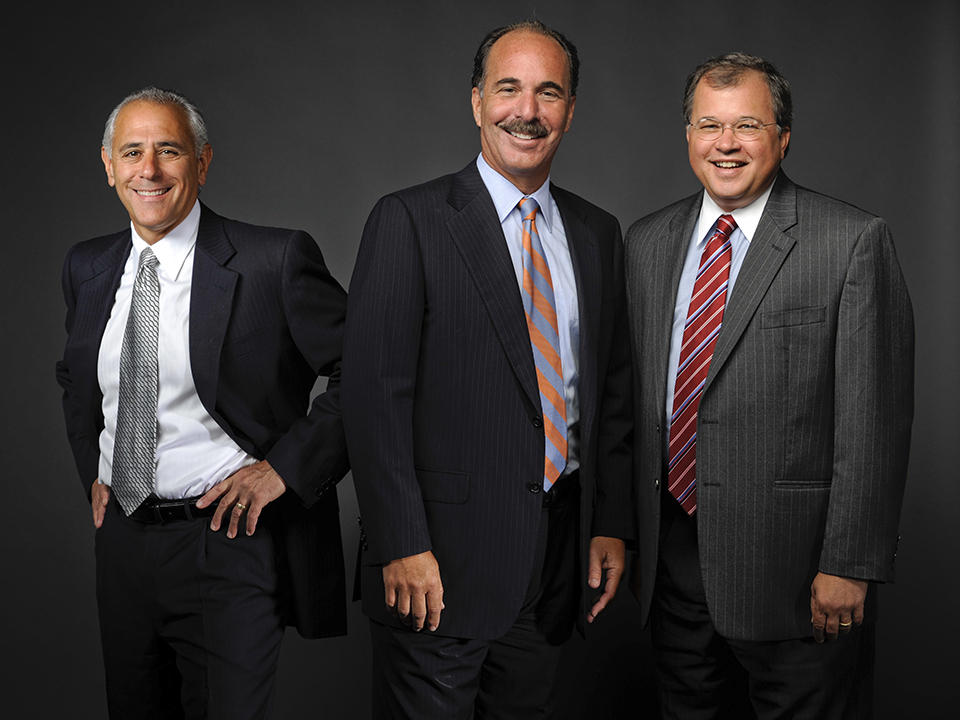
From left: Attorney Ronald E. Gluck, Attorney Marc L. Breakstone and Attorney David W. White of Breakstone, White & Gluck. Our Boston law firm specializes in personal injury and medical malpractice representation for plaintiffs.
Breakstone, White & Gluck today announces that Attorney Marc L. Breakstone, Attorney David W. White and Attorney Ronald E. Gluck have earned rankings in The Best Lawyers in America© 2020. This marks the 10th year our personal injury attorneys have been recognized for our results for clients in the Boston area.
Best Lawyers© is the oldest and most respected attorney ranking service in the world, publishing its attorney listings in partnership with U.S. News & World Report and other media partners. The rankings are intended to help those who need legal services identify highly respected attorneys.
Best Lawyers© recognizes lawyers through a peer-review process. Members of the public, clients and other attorneys first provide nominations. Attorneys are then asked to evaluate other attorneys on their legal abilities in their practice areas.
Marc L. Breakstone was selected for recognition in the specialties of Personal Injury Litigation – Plaintiffs, Medical Malpractice Law – Plaintiffs, and Professional Malpractice Law – Plaintiffs.
David W. White was selected for recognition in the specialties of Personal Injury Litigation – Plaintiffs, Insurance Law and Medical Malpractice Law – Plaintiffs.
Ronald E. Gluck was selected for recognition in the specialty of Personal Injury Litigation – Plaintiffs.
About Breakstone, White & Gluck
Founded in 1992, Breakstone, White & Gluck has earned a reputation for superb results for our clients. With more than 100 years combined experience, our attorneys have won leading verdicts and settlements in negligence, medical malpractice, product liability and construction accident cases. We represent clients in Boston, Cambridge and surrounding communities, and across Massachusetts.
Recognition
Attorney Breakstone, Attorney White and Attorney Gluck have been consistently recognized individually and as a firm. For the past 15 years, Super Lawyers has featured our attorneys in its annual rankings published in Boston Magazine. Our attorneys have also received selection to the Top 100 New England Super Lawyers and the Top 100 Massachusetts Super Lawyers.
Personal Injury Experience
Breakstone, White & Gluck is committed to assisting individuals and families who have suffered catastrophic injuries or death as a result of someone else’s negligence. Our attorneys provide representation after injuries arising from motor vehicle accidents, transportation accidents, construction accidents, premises liability accidents, defective products and dog bites, along with other injuries. Our partners have practiced together for nearly 30 years – and each has more than 35 years of experience handling personal injury and medical malpractice cases in Massachusetts.
Read about our personal injury case results for clients.
Car Accidents and Transportation Accidents
Car accidents are one area of our expertise. Breakstone, White & Gluck represents those injured in all types of motor vehicle accidents, including car accidents, pedestrian accidents, bicycle accidents, motorcycle crashes and large truck collisions. Our attorneys are highly experienced in investigating cases involving drunk driving injuries and time and again, have held drivers, restaurants and bars responsible for the injuries they have caused. Our car accident case results for clients.
The firm offers special expertise in handling cases involving pedestrian injuries in MBTA bus accidents and subway accidents. Our MBTA bus accident case results for clients.
Medical Malpractice Experience
Breakstone, White & Gluck has represented hundreds of clients who have suffered catastrophic injuries as a result of medical malpractice, at the doctor’s office, hospital, nursing home or in an ambulance. When medical malpractice leads to death, we represent families who have lost loved ones in wrongful death claims, pursuing answers about what happened, then obtaining compensation to help cope with emotional, physical and financial losses. Our attorneys’ medical malpractice awards for clients.
Construction Accident Experience
Our attorneys are known for their thorough and skilled investigation of construction accidents as well as our aggressive pursuit of the best financial reward for our clients and their families. When accidents happen, construction companies sometimes maneuver to limit or avoid financial responsibility. Our attorneys have stopped companies from taking these deceptive steps to protect the best interests our clients. Read about our work, including our $7.5 million settlement for the victim of a fatal propane gas explosion on a condo construction site and our $1.375 million settlement for a family who lost a son in a crane collapse.
Boston Personal Injury Lawyers – Free Legal Consultation
If you or a loved one has been injured, learn your legal rights for seeking compensation for your medical expenses, lost wages and pain and suffering. For a free legal consultation, contact Breakstone, White & Gluck today at 800-379-1244 or 617-723-7676 or use our contact form. You can also learn more about our work from our past clients.
Attorney Marc L. Breakstone Tells Boston Globe: Kevin Spacey Civil Lawsuit is Over

Attorney Marc L. Breakstone was interviewed this past weekend about the civil and criminal cases against actor Kevin Spacey. Breakstone said the accuser’s decision to withdraw the civil lawsuit “with prejudice” is extremely significant.
“This will never be refiled,” Breakstone told The Boston Globe. “This claim is now extinguished for all time.”
The accuser, who is the son of former Boston television anchor Heather Unruh, just filed the civil lawsuit in Nantucket Superior Court on June 26. Breakstone said the withdrawal of the civil lawsuit could mean Spacey has reached a settlement with the accuser. If there is such an agreement, Breakstone said, there will likely be confidentially requirement to keep the details private and out of public view.
Spacey and his legal team are scheduled to return to Nantucket District Court this morning for a hearing in the criminal case. Breakstone said withdrawal of the civil lawsuit could jeopardize the criminal proceedings, but prosecutors interviewed by The Boston Globe insisted the civil case will not affect the criminal proceedings.
Kevin Spacey is a two-time Oscar winner best known for his role on “House of Cards,” a Netflix production. He played the character of Frank Underwood from 2013 through 2017, when he was charged with indecent assault and battery in Nantucket. Netflix kept producing the show, but cut ties with Spacey.
Spacey is accused of indecent assault and battery on Unruh’s son in July 2016 at Nantucket’s Club Car Restaurant.
About Breakstone, White & Gluck
The Boston personal injury lawyers at Breakstone, White & Gluck have over 100 years combined experience representing those injured by the negligence and wrongdoing of others. If you have been injured, learn your rights. For a free legal consultation, 800-379-1244 or 617-723-7676. You can also use our contact form.
Fourth of July Water Safety Tips
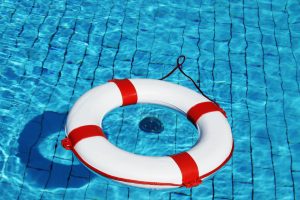
Tips for swimming safely in Massachusetts pools, lakes and ponds and ocean beaches.
We wish our friends, families and colleagues a wonderful Fourth of July holiday week. Whether you enjoy the fireworks in Boston or travel to Cape Cod, we hope you enjoy a more leisurely pace, some good BBQ and a little time in the water. But before you swim, we urge you to remember the rules of water safety at all times.
Ten people die in unintentional drownings each day in the U.S., according to the Centers for Disease Control and Prevention (CDC). While young children suffer a high number of drowning deaths, swimmers of all ages are at risk during the holiday week and summer months, when we spend more time near the water. This is partly because of our water skills – many of us can’t swim or we overestimate our abilities. According to the American Red Cross, 80 percent of Americans claim they can swim, but just 56 percent can actually perform the five basic water competency skills.
Alcohol consumption also tends to rise during celebrations and gatherings. Alcohol consumption can interfere with one’s ability to interpret their surroundings and respond in any setting, but especially in extreme heat. Near the water, alcohol is particularly potent, factoring into up to 70 percent of deaths associated with water recreation, according to the CDC.
Swimming Pool Safety
Pools should be protected by four-sided fencing which stands at least four feet tall. Doors should be self-closing and self-latching. If you are a parent, avoid visiting homes with inadequate fencing because this is the first and most important line of defense in protecting your child against drowning.
Pools should also have anti-entrapment drain covers and safety release systems to protect children from drain entrapment. Ask pool owners where the drains are before you swim.
Watch children closely. Commit to avoiding distractions such as cell phones, conversation or grilling.
In general, beware of any activity which encourages you to move your gaze up, down or away from the pool. If a child is struggling in the water, they need an immediate response and they cannot call out to you if they are starting to drown.
Never consume alcohol at the pool.
Swim with young children and keep them within arm’s reach.
When using an unfamiliar pool, take a test swim on your own without your child.
Walk into a pool using steps or a ladder, rather than diving.
When you are done swimming, if you have young children, leave the pool area and make sure it’s properly secured.
Water Safety in Lakes and Ponds
If you are swimming, look for a public or private beach staffed by lifeguards.
Adults and children should wear life jackets when in lakes and ponds, on a boat or a dock.
Do not consume alcohol at the lake or pond.
Always swim with a friend or family member.
Closely supervise young children to prevent drownings. At lakes and ponds, there are more elements to consider, including shifting sand and dark water.
Enter the water feet first from a beach or other areas marked as safe entrances.
Only dive in areas which are clearly marked as safe for diving. Jumping in feet first is safer.
Never dive from bridges or boats.
Be responsive to water and weather conditions. Leave the water immediately when there is thunder and lightning.
Pay attention to boats, personal watercraft and other swimmers on the pond which could interfere with your ability to swim safely.
Water Safety at the Ocean
Do not expect your family to be ready for the beach just because they have experience in a swimming pool or even a lake or pond. The ocean is much more challenging and unpredictable.
Choose beaches staffed by lifeguards. In addition to responding to emergencies, lifeguards can share information about water conditions, such as the tide schedule, vegetation, marine animals and fish.
Just like every lake and pond, remember every beach has different conditions.
Swim with young children.
Never swim alone; swim with a buddy.
Learn how to identify a rip tide and how to respond. According to the American Red Cross, swimmers are advised to swim parallel to the shore line until they are free from the rip tide. When swimmers can’t do this, they can attempt to just float and tread water until they have moved out of the rip tide.
Leave the water immediately if you hear thunder or see lighting. You should also head back to shore if you are traveling in a boat. If you can’t return to shore, lie in the bottom of the boat or shelter in the cabin if you can.
About Breakstone, White & Gluck
The Boston personal injury lawyers at Breakstone, White & Gluck are committed to providing clients with aggressive and thorough representation. We represent clients in all types of personal injury cases, including car accidents, bicycle accidents, pedestrian accidents, dog bites, swimming pool injuries and premises liability cases. For a free legal consultation, contact us today at 800-379-1244 or 617-723-7676 or use our contact form.



